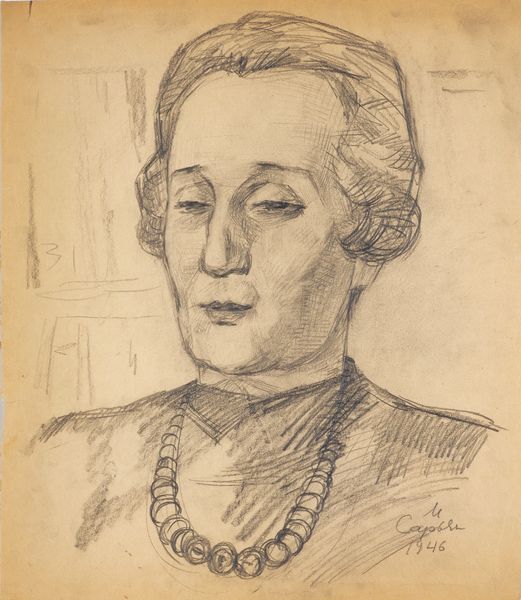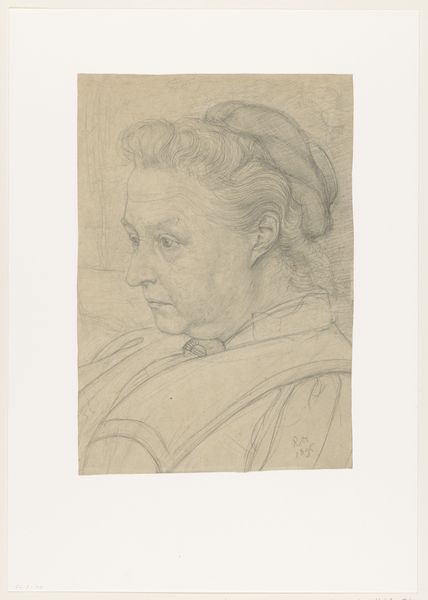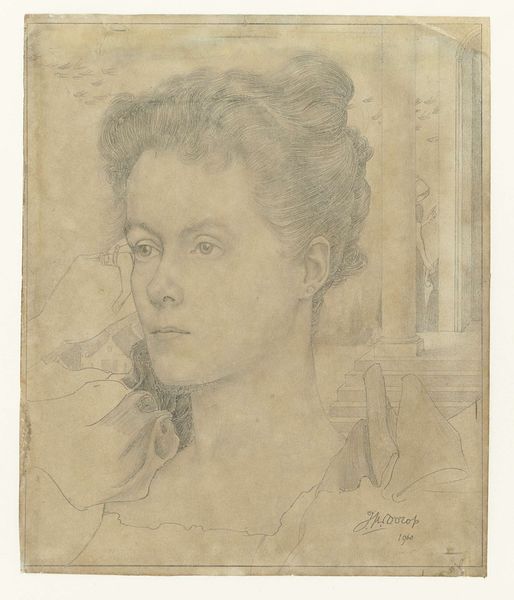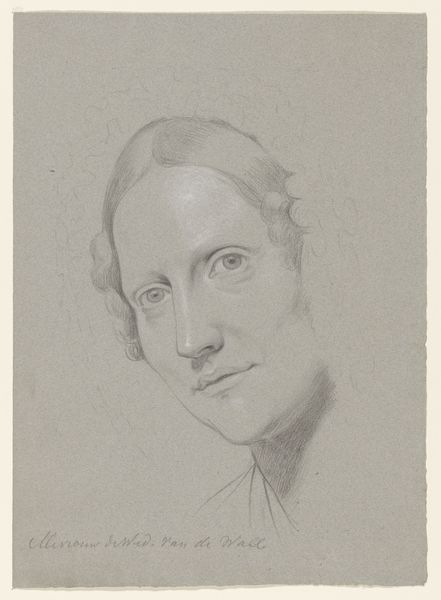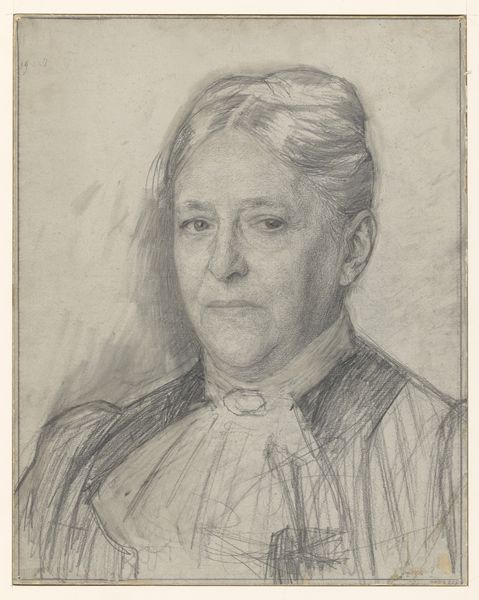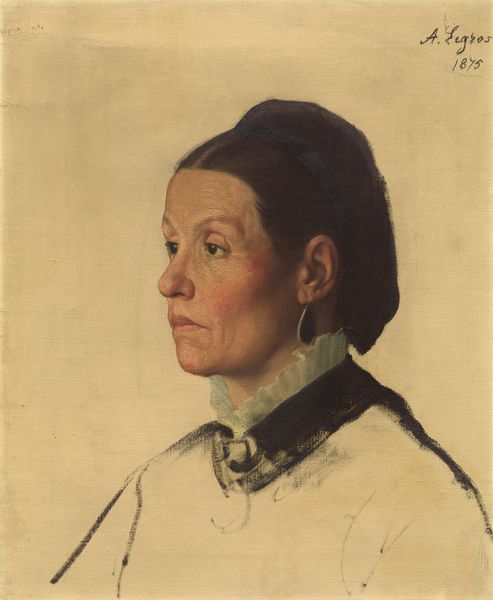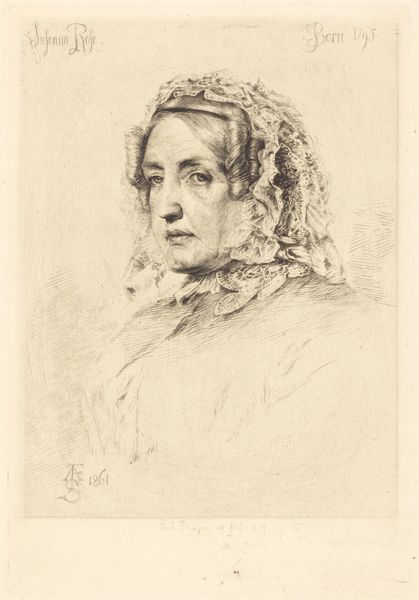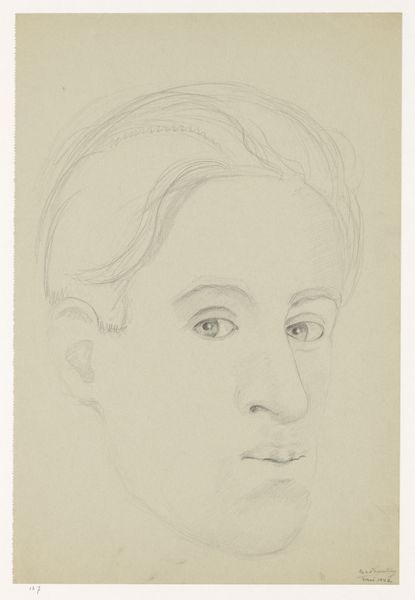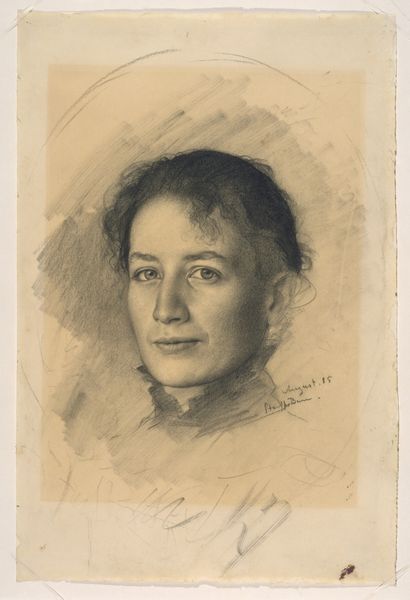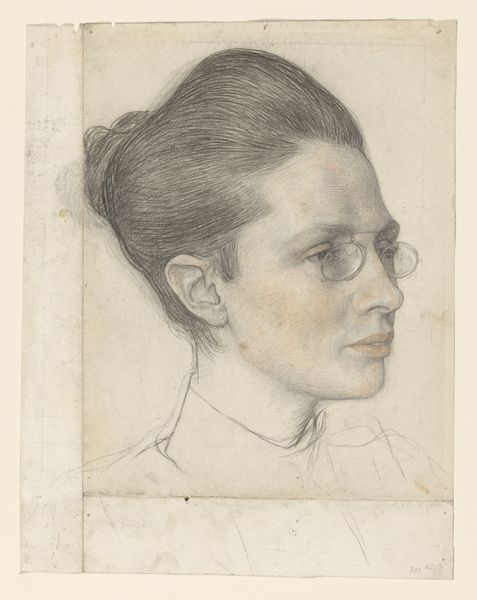
drawing, watercolor, pencil
#
drawing
#
caricature
#
watercolor
#
pencil
#
portrait drawing
#
academic-art
#
portrait art
#
realism
Dimensions: height 350 mm, width 255 mm
Copyright: Rijks Museum: Open Domain
Curator: Standing here, we’re face to face with Jan Veth’s “Portret van mevrouw Tutein Nolthenius-Tutein Nolthenius,” created sometime between 1874 and 1925. It’s a remarkable portrait crafted with pencil and watercolor, held here at the Rijksmuseum. Editor: It’s a tender and subdued study, wouldn’t you say? The soft watercolors lend a quietness, a reserved dignity to the subject’s gaze. The eyes seem… weighted. Curator: Absolutely. Veth was well-known for his psychologically insightful portraits of intellectuals and prominent figures in Dutch society. He wasn't simply rendering a likeness. He sought to capture character, societal standing. Portraiture, you see, served as a visual marker of status and intellect in that era. Editor: Indeed. Look closely, and you can sense her character— a trace of melancholy in the eyes. Even her hairstyle is carefully arranged but not ostentatious. Note, also, the intricate, high-necked gown that suggests a thoughtful but unassuming refinement. Does it also say something about her status? Curator: Undeniably. That detail signifies both wealth and propriety. These garments reinforced societal expectations, the symbolic attire performing a role as powerful as any legal pronouncement. Her posture and demure gaze convey respectability, all within a highly stratified social context. Editor: You are spot on about that! Yet, looking closer, I think there's more than societal status. She almost appears as a figure of grief or longing. Curator: It could be a reading influenced by our present. Historical context always has its filters. During that era, such reserve was almost requisite for portraying women of a certain class, a symbol in itself! I am wondering: Could Veth’s approach also act as a subtle form of social critique by showcasing, with subtle emotion, a quiet restraint expected from her? Editor: That's astute. So, her face and garments serve a dual purpose: signifying class while hinting at potential restriction. I will continue to dwell on how such simplicity and tonal subtleties can generate such deep feeling... It’s hauntingly gentle and beautifully captures more than meets the eye. Curator: A portrait resonating with layers, social commentary mingling with the subtlest gestures, leaving lingering questions about persona, identity, and social expectation, as captured by Jan Veth.
Comments
No comments
Be the first to comment and join the conversation on the ultimate creative platform.
